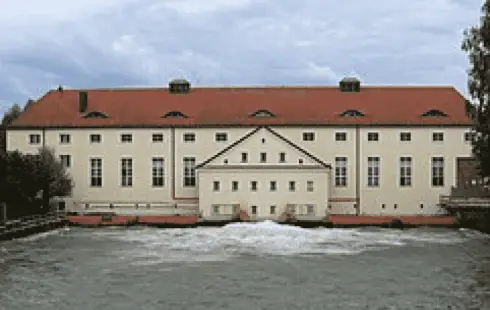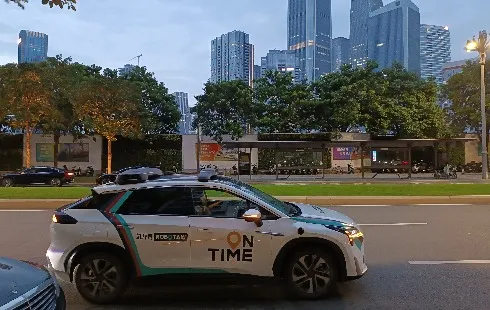
Custom T-Shirts: Last-Minute Gifts They'll Actually Love
Section: Arts
 Have you ever wondered what lies behind the formidable façade of the imposing structure that stretches across the serene canal near Flaucher? This question has likely crossed the minds of many who pass by on their way to swim, barbecue, or simply take a leisurely stroll. This architectural enigma is none other than Isarkraftwerk 2, and, under ordinary circumstances, it remains inaccessible to the public. School classes, by prior arrangement, may venture inside, and occasional guided tours are offered through the Volkshochschule.
Have you ever wondered what lies behind the formidable façade of the imposing structure that stretches across the serene canal near Flaucher? This question has likely crossed the minds of many who pass by on their way to swim, barbecue, or simply take a leisurely stroll. This architectural enigma is none other than Isarkraftwerk 2, and, under ordinary circumstances, it remains inaccessible to the public. School classes, by prior arrangement, may venture inside, and occasional guided tours are offered through the Volkshochschule.
However, on a special occasion marking the centenary of the facility, which commenced operations in 1923, its doors were flung open to visitors from 12 PM to 4 PM. In fact, the first wave of curious visitors arrived an hour prior, and by day's end, almost 3000 individuals had meandered through this narrow edifice. The Munich City Utilities (SWM) had not anticipated such an overwhelming turnout, yet they were well-prepared.
For younger guests, there were copies of turbine drawings for coloring and kits to assemble solar-powered model satellites. Many identifiable by their light blue jackets, SWM staff members fielded inquiries, no matter how repetitive. Christoph Rapp, Head of Hydroelectric Power Plants, never ceased to astonish newcomers as he explained the remarkable journey of a water droplet, traversing 3700 years in the sea before finding its way through a river into a power plant.
When asked about changes over the past decades, Christoph responded, "The volumes of water at specific times of the year. Previously, the snowmelt extended until August; now it concludes in May, with more rain during the winter." Nevertheless, he maintained a sanguine perspective regarding the future of hydroelectric power, assuaging concerns despite a dry year in 2022.
It was evident that Christoph and his colleagues relished the opportunity to explore this historical structure. However, no one is currently stationed here. The facility has been operating fully automatically since 2010. This led some visitors to inquire about contingency plans in case of malfunctions. In such an event, the computer systems trigger alarms, and a maintenance team promptly intervenes.
Isarkraftwerk 2 is among the smaller hydroelectric plants along the Isar and not the oldest. Since 1907, Isarwerk 1, located near Floßlände, has been providing Munich residents with electricity. The newest addition is the "Wasserkraftschnecke" (water power snail) near the Stadtbachstufe, close to Roecklplatz. In total, there are four SWM power plants along the "Werkkanal" (factory channel).
At full capacity, Isarkraftwerk 2 employs four turbines. However, 13 years ago, the plant underwent a comprehensive renovation, resulting in the replacement of the former Francis turbines - named after American engineer James B. Francis - with Kaplan turbines, designed by Austrian engineer Viktor Kaplan. These are increasingly used in run-of-the-river hydroelectric plants situated along rivers with fluctuating water levels. Their key advantage lies in their adjustability according to water volume and head height.
Isarkraftwerk 2 can handle a maximum flow of up to 70,000 liters of water per second, providing electricity to over 6000 Munich households during peak operation. Solar panels are also affixed to the southern rooftop of the power plant, contributing over 246,000 kilowatt-hours to the grid. However, it's important to note that Isarkraftwerk 2 is not equipped for energy storage.
The turbines remain submerged in water and are thus not visible. The most striking elements are the four large rakes south of the building, constantly sifting through the water. During autumn, they are particularly efficient at collecting a vast quantity of leaves, which are subsequently channeled into the turbine screws. Impressively displayed were items that had found their way into the Isar, despite not belonging there: car tires, skateboards, gas canisters, inflatable swimming devices, and even a small safe. The hydroelectric plants, it seems, not only generate green energy but also play a role in waste disposal, as one of the staff members aptly noted: "They are also custodians of cleanliness."
Rufus46, CC BY-SA 3.0

Section: Arts

Section: Arts

Section: Business

Section: Business

Section: Arts

Section: Health

Section: Arts

Section: News

Section: News

Section: Arts
Health Insurance in Germany is compulsory and sometimes complicated, not to mention expensive. As an expat, you are required to navigate this landscape within weeks of arriving, so check our FAQ on PKV. For our guide on resources and access to agents who can give you a competitive quote, try our PKV Cost comparison tool.
Germany is famous for its medical expertise and extensive number of hospitals and clinics. See this comprehensive directory of hospitals and clinics across the country, complete with links to their websites, addresses, contact info, and specializations/services.
One of the most beautiful squares transforms into a summer stage every year for two days. The Gärtnerplatz Open-Air features a free music and cultural program across three stages, as well as street food from local vendors. On Saturday, the main stage at Gärtnerplatz offers something for everyone,...



No comments yet. Be the first to comment!